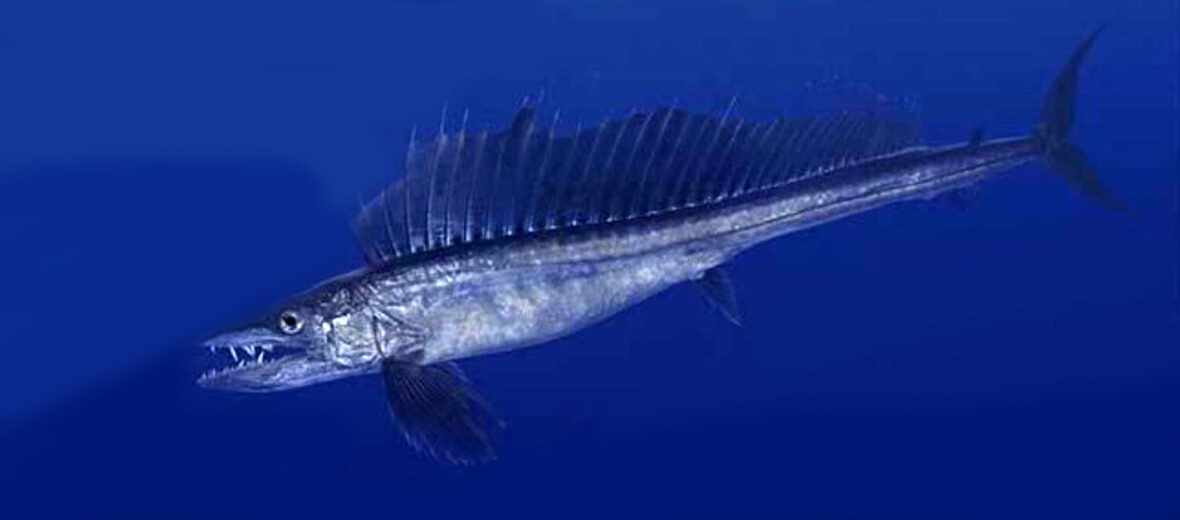
Found throughout the world’s oceans, sans the polar seas, it’s the lancetfish. These peculiar looking fishes dwell in deep ocean water, swimming to depths of up to 1 mile! The lancetfish often gets pulled up via long-lines but aren’t sought after specifically. Due to their presumed numbers and global distribution, these fishes are listed as Least Concern by the IUCN.
First the Stats…
Scientific name: Alepisaurus
Weight: Up to 20 lbs.
Length: Up to 7 feet
Lifespan: Unknown
Now on to the Facts!
1.) Their scientific name, Alepisaurus, means “scaleless lizard.” They have smooth bodies, covered in pores.
2.) They live in tropical and subtropical waters with occasional visits to subarctic waters to feed.
3.) These fish are hermaphrodites (possess both male and female reproductive organs).
4.) The watery and gelatinous flesh of the lancet is not very palatable to humans.
5.) Tuna, sharks, and fur seals prey on lancetfish.
But wait, there’s more on the lancetfish!
6.) Seeing as their gelatinous muscles aren’t meant for speed, it is presumed that they are ambush predators.
7.) These critters are known to be cannibals.
Did you know…?
Their slow digestive system has shown barely digested fish in their stomachs, upon dissections. This indicates that they may gorge themselves when food is abundant and then digest as needed.
8.) There are currently 2 recognized species of lancetfish: Alepisaurus brevirostris and Alepisaurus ferox. The only difference between the 2 is the length of their snout.
9.) They prey on fishes, octopods, squid, tunicates, and crustaceans.
10.) Tetraphyllidean tapeworms (Pelichnibothrium speciosum) are a common parasite of long-snouted lancetfish.
Now a Short Lancetfish Video!
Be sure to share & comment below! Also, check out the Critter Science YouTube channel. Videos added frequently!
Want to suggest a critter for me to write about? Let me know here.



